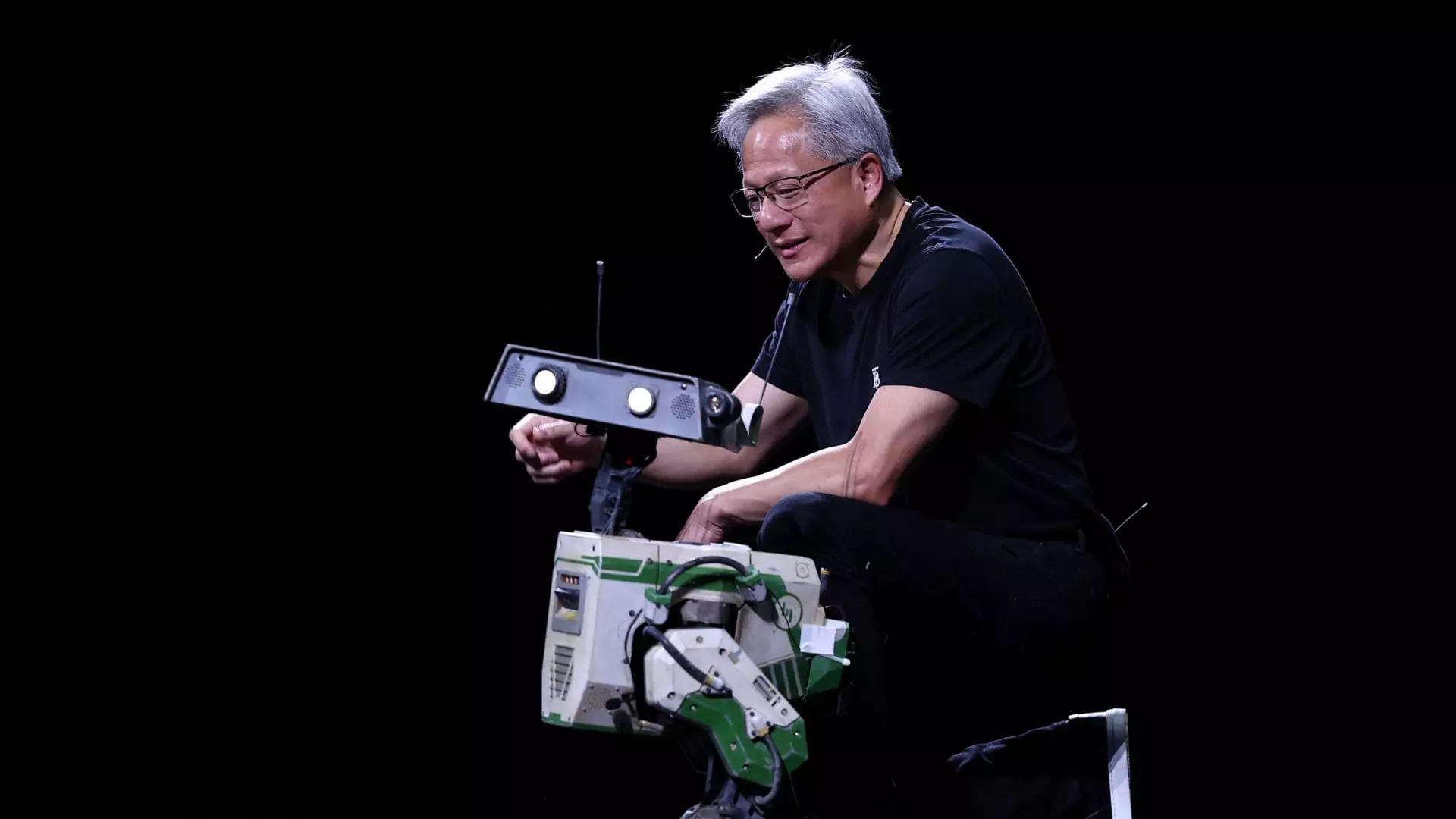In the rapidly evolving tech landscape, few companies have demonstrated the kind of foresight and ambition that Nvidia has under the leadership of CEO Jensen Huang. While artificial intelligence (AI) has dominated discussions about future growth and technological innovation, Huang asserts that robotics may serve as the most significant frontier for Nvidia’s expansion beyond AI. He argues passionately that the automotive sector will be the launchpad for self-driving vehicles, positioning Nvidia as a linchpin in this transformation. Huang’s insistence on the interplay between AI and robotics reflects a deeper understanding of how these technologies could synergize to create comprehensive solutions across various industries.
At Nvidia’s annual shareholders meeting, Huang made it clear that robotics is not just an adjunct market for the chipmaker but a core component of its vision for the future. “We have many growth opportunities across our company, with AI and robotics being the two largest,” he stated, identifying a multitrillion-dollar potential. The enthusiasm surrounding his words illustrates an underlying belief that technology is on the cusp of a paradigm shift, where robots and AI systems could redefine daily life.
Charting New Territory: Nvidia’s Recent Business Model Adjustments
To capitalize on this emerging market, Nvidia has strategically restructured its reporting protocols by integrating its automotive and robotics divisions into a unique business line. Such a decision not only reflects the company’s agile response to market demands but also emphasizes the importance of these sectors in Nvidia’s overall revenue model. The recent announcement of $567 million in quarterly sales from this combined unit—an astounding 72% annual growth—serves as a testament to the accelerating demand for robotics technology.
This remarkable growth trajectory has been fueled by Nvidia’s robust portfolio in data center graphics processing units (GPUs), which have become essential in the development and deployment of advanced AI applications. Consultants from LSEG have projected Nvidia’s sales to potentially reach nearly $200 billion this year alone, bolstering its meteoric rise as a leading tech entity. With such numbers, it is evident that Nvidia has effectively positioned itself at the forefront of a technological revolution, further establishing its market dominance alongside major players like Microsoft.
Revolutionizing the Automotive Landscape
Nvidia’s revolutionary impact on the automotive industry cannot be overstated. As Huang emphasizes, robotics in self-driving cars leverages the company’s state-of-the-art data center AI chips to pave the way for more sophisticated and autonomous vehicles. Collaborations with industry giants such as Mercedes-Benz illustrate that the Drive platform is leveraging cutting-edge chips and software for real-time navigation and operational control. This partnership signifies that Nvidia is not merely a chip provider; it is emerging as a vital technology partner, equipping essential industries with the tools necessary for profound transformation.
Moreover, the unveiling of AI models designed for humanoid robots—dubbed Cosmos—is crucial for expanding Nvidia’s reach beyond traditional computing environments. Here, too, Huang’s vision shines, as he predicts a future teeming with billions of robots and autonomous vehicles, all interconnected through Nvidia’s robust technological framework.
The Brand Evolution: Beyond Chips to AI Infrastructure
An intriguing aspect of Huang’s remarks pertains to the evolving identity of Nvidia itself. By rebranding the company from a chip maker to an “AI infrastructure” or “computing platform” provider, Huang encapsulates the multifaceted nature of technology development today. The need for complementary technologies has never been more pressing, and Nvidia’s approach includes not just chips, but also software, cloud services, and networking solutions that create a cohesive ecosystem.
As the landscape shifts, Nvidia is not only redefining its role within the tech industry but also encouraging investors and stakeholders to understand that the company is at the nexus of a revolutionary change. Huang’s compelling vision hints at a deeper narrative of innovation—one where collaborative platforms will dictate the future, rather than standalone chips or technologies.
In essence, Nvidia stands on the brink of an epoch where the integration of robotics and AI could completely reshape our world. Huang’s ambitious forecasts, coupled with significant operational changes at Nvidia, suggest that we are witnessing the dawn of an era where technology and humanity will coexist in unprecedented ways. It’s a thrilling prospect that will reverberate across industries, economies, and lives globally.

